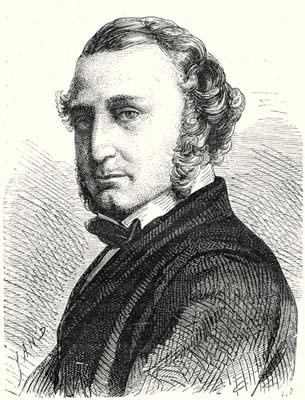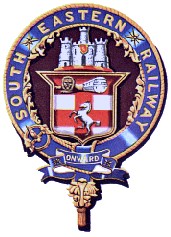Related Research Articles

Sir Samuel Morton Peto, 1st Baronet was an English entrepreneur, civil engineer and railway developer, and, for more than 20 years, a Member of Parliament (MP). A partner in the firm of Grissell and Peto, he managed construction firms that built many of London's major buildings and monuments, including the Reform Club, The Lyceum Theatre, Nelson's Column and the replacement Houses of Parliament - commissions which brought him great wealth. The scale of his operations, and that of the workforces needed to undertake them, made him the world's largest employer.

Sir Casimir Stanislaus Gzowski,, was a Polish-Canadian engineer who was known for his work on a wide variety of Canadian railways, as well as work on the Welland Canal. He also served as acting Lieutenant Governor of Ontario from 1896 to 1897.

The London, Chatham and Dover Railway was a railway company in south-eastern England created on 1 August 1859, when the East Kent Railway was given parliamentary approval to change its name. Its lines ran through London and northern and eastern Kent to form a significant part of the Greater London commuter network. The company existed until 31 December 1922 when its assets were merged with those of other companies to form the Southern Railway as a result of the grouping determined by the Railways Act 1921. The railway was always in a difficult financial situation and went bankrupt in 1867, but was able to continue to operate. Many of the difficulties were caused by the severe competition and duplication of services with the South Eastern Railway (SER). However, in 1898 the LCDR agreed with the SER to share the operation of the two railways, work them as a single system and pool receipts: but it was not a full amalgamation. The SER and LCDR remained separate companies with separate shareholders until both becoming constituents of the Southern Railway on 1 January 1923.

Thomas Russell Crampton, MICE, MIMechE was an English engineer born at Broadstairs, Kent, and trained on Brunel's Great Western Railway.

The South Eastern Railway (SER) was a railway company in south-eastern England from 1836 until 1922. The company was formed to construct a route from London to Dover. Branch lines were later opened to Tunbridge Wells, Hastings, Canterbury and other places in Kent. The SER absorbed or leased other railways, some older than itself, including the London and Greenwich Railway and the Canterbury and Whitstable Railway. Most of the company's routes were in Kent, eastern Sussex and the London suburbs, with a long cross-country route from Redhill in Surrey to Reading, Berkshire.

Thomas Brassey was an English civil engineering contractor and manufacturer of building materials who was responsible for building much of the world's railways in the 19th century. By 1847, he had built about one-third of the railways in Britain, and by time of his death in 1870 he had built one in every twenty miles of railway in the world. This included three-quarters of the lines in France, major lines in many other European countries and in Canada, Australia, South America and India. He also built the structures associated with those railways, including docks, bridges, viaducts, stations, tunnels and drainage works.

Edward Ladd Betts was an English civil engineering contractor who was mainly involved in the building of railways.
Thomas Grissell was an English public works contractor who was responsible for constructing a number of prestigious buildings in England.
James Beatty was an Irish railway engineer.

Hungerford Market was a produce market in London, at Charing Cross on the Strand. It existed in two different buildings on the same site, the first built in 1682, the second in 1832. The market was first built on the site of Hungerford House, next to Durham Yard, the town house of the Hungerford family. The house had burned down in 1669 as is recorded in the Diary of Samuel Pepys. It was replaced by a new Italianate market building by Charles Fowler, which opened in 1833. The new market was unsuccessful. It was damaged when the adjoining Hungerford Hall burned down in 1854, and was sold to the South Eastern Railway in 1862. Charing Cross railway station was built on the site and opened in 1864.

The Wharncliffe Viaduct is a brick-built viaduct that carries the Great Western Main Line railway across the Brent Valley, between Hanwell and Southall, Ealing, UK, at an elevation of 20 metres (66 ft). The viaduct, built in 1836–7, was constructed for the opening of the Great Western Railway (GWR). It is situated between Southall and Hanwell stations, the latter station being only a very short distance away to the east.
Peto may refer to:

Southampton Tunnel is a 528-yard railway tunnel that runs close to the Civic Centre in the centre of the Hampshire city of Southampton, in England.

Peto, Brassey and Betts was a civil engineering partnership between Samuel Morton Peto, Thomas Brassey and Edward Betts. They built a supply and casualty transport railway from Balaclava port to the siege lines southeast of Sevastopol in 1855 during the Crimean War. The supply line was instrumental in the success of the siege. The partnership was contracted to produce a number of significant projects around the world including Victoria Bridge in Montreal and the European and North American Railway.
Henry Grissell, sometimes known as "Iron Henry", was an English foundry-man who was responsible for the ironwork in a number of prestigious buildings in England, Russia, Austria, and Egypt.

The Norfolk Railway was an early railway company that controlled a network of 94 miles around Norwich, England. It was formed in 1845 by the amalgamation of the Yarmouth and Norwich Railway opened in 1844, and the Norwich and Brandon Railway, not yet opened. These lines were built out of frustration that the Eastern Counties Railway line that was expected to connect Norwich to London failed to be completed. The Norfolk Railway also leased the Lowestoft Railway and Harbour company, and built a branch to Dereham and Fakenham, opened in 1846 and 1849 respectively.
Peto and Betts was a civil engineering partnership formed in 1848 between Morton Peto and Edward Ladd Betts that was mainly involved with the construction of railways in the UK and abroad.
Henry Peto (1780–1830) was a British building contractor and uncle to Thomas Grissell (1801–1874) and Morton Peto.
The London, Tilbury and Southend Railway (LT&SR), was a British railway company, whose network connected Fenchurch Street station, in central London, with destinations in east London and Essex, including Barking, Upminster, Grays, Tilbury, Southend and Shoeburyness. The company and its assets were sold to the Midland Railway in 1912. The network over which they operated is largely intact and is currently operated as part of the Essex Thameside franchise.